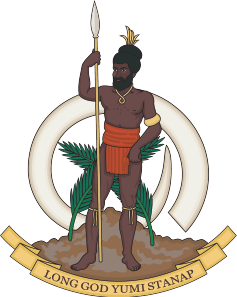A pandemonium
of history
A Short History Of Vanuatu
Delving into Vanuatu’s military history wouldn’t be complete without a short history lesson on how it became occupied by European settlers in the first place, and why for so long it was called New Hebrides.
European settlement of the New Hebrides group of islands began after a Spanish expedition led by Portuguese explorer Pedro Fernandes de Queirós explored the islands in 1606.
Blame Cook
It wasn’t until Captain James Cook visited the islands in the 18th century, that it was named New Hebrides, for the Hebrides Scottish archipelago. Not long after Cook it was colonised by both the French and the British, with both countries laying claim to the island group. In 1906 both nations agreed upon a system of administration that would involve them sharing sovereignty.
The Condominium
The two countries signed an unusual agreement making the islands an Anglo-French Condominium – or ‘pandemonium’ as it was referred to by some critics. The French ruled from Second on Efate island and the British from Hog Harbour on Espritu Santo. Under the Condominium there were three separate governments – one French, one British, and one joint administration.
Apart from the Joint Court, everything in the New Hebrides was duplicated and existed in pairs – one British, the other French – two currencies, two police forces, two sets of laws, two education systems, two health services, and even two prison systems.
An Amicable Agreement
The system worked amicably until the outbreak of World War II when France was defeated by Germany in 1940. The French suddenly found their circle of influence had diminished somewhat, giving the British a stronger foothold in matters of state throughout the course of World War II.
In an attempt to provide the New Hebrides with some form of defence, the Australian military established the New Hebrides Defence Force based on the island of Malekula. Beginning as a small unit with limited access to military training and modern equipment, it grew into a combined force of around 2000 Australians and locals.
The Pacific War
When the Pacific war broke out in late 1941, the New Hebrides found itself caught in a precarious position due to its strategic position not far from the shipping routes between the US and Australia and in close proximity to Guadalcanal and the Solomon Islands. And for that very reason it became home to a vast number of US Army, Navy and Air Force bases and hundreds of thousands of Allied troops during World War II. Without those bases, particularly those on Santo, the Allies wouldn’t have had the capability to thwart the Japanese invasions of Guadalcanal and the Solomons and prevent Japan’s ultimate push southwards towards Australia and New Zealand.
Independence
Following World War II, Britain and France continued to administer New Hebrides until 1980 when the islands were finally granted independence and formally known as Vanuatu.






